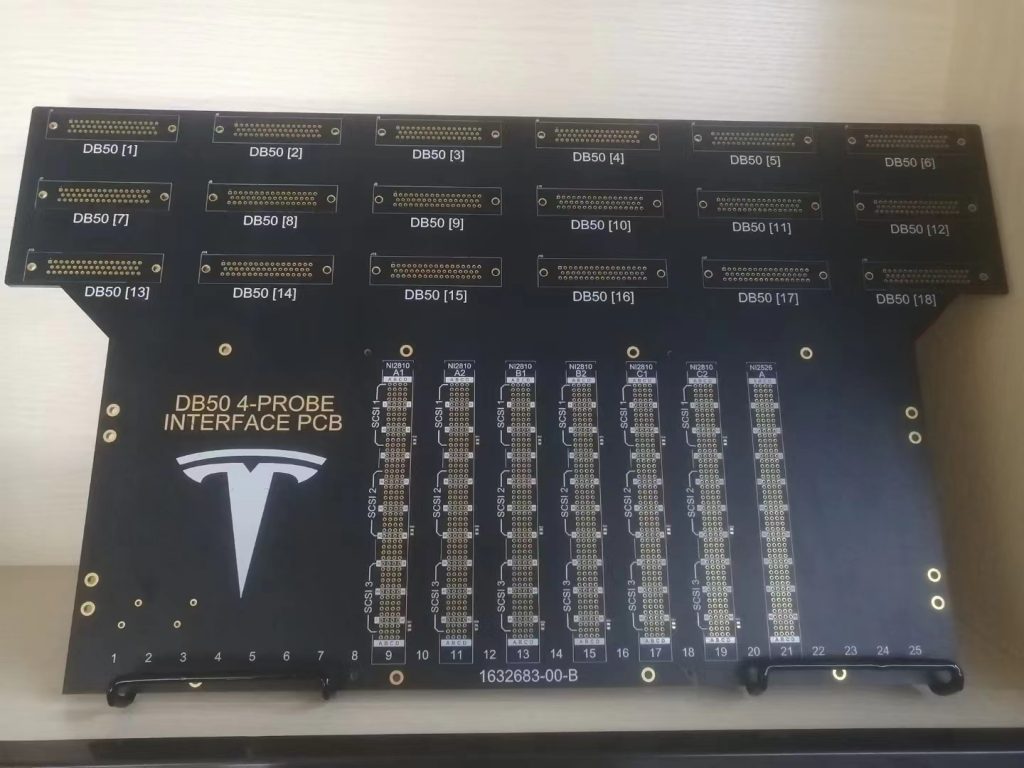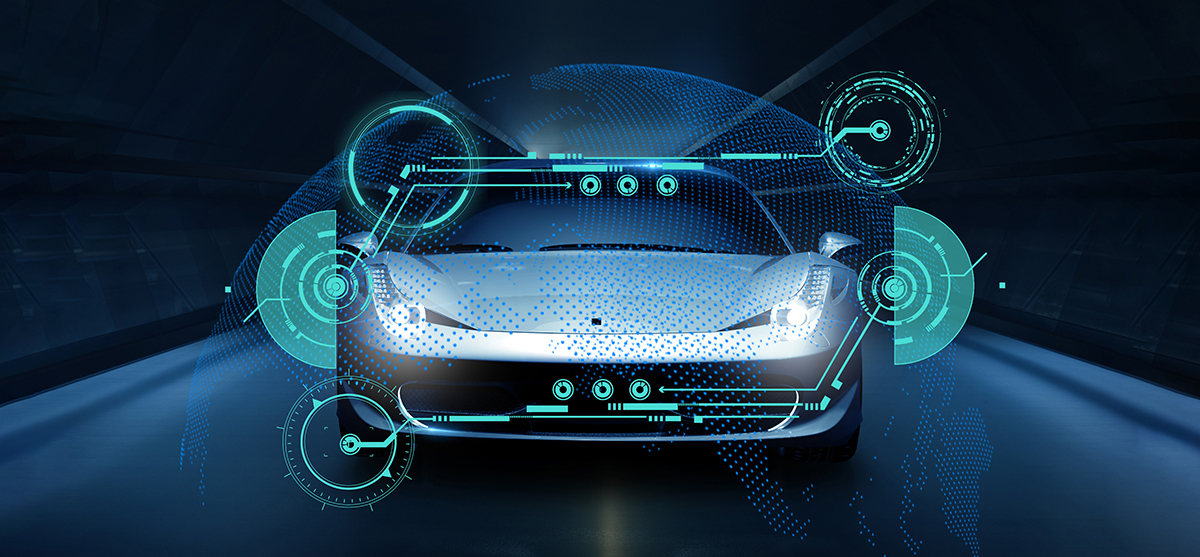
An automotive PCB (Printed Circuit Board) is a specialized type of circuit board used in various electronic systems and components within vehicles. These PCBs are designed to meet the specific requirements and environmental conditions of the automotive industry. Automotive PCBs play a critical role in the functionality of modern vehicles by providing the electrical connections and support for numerous electronic systems and control units. Here are some key aspects of automotive PCBs:

1. Diverse Applications: Automotive PCBs are used in a wide range of applications within vehicles, including engine control units (ECUs), powertrain control modules, infotainment systems, instrument clusters, airbag systems, lighting control, navigation systems, and various sensors and actuators.
2. Ruggedized Design: Automotive PCBs are built to withstand the harsh conditions of the automotive environment, which includes exposure to temperature extremes, humidity, vibrations, and electromagnetic interference (EMI). They are typically designed to be more durable and reliable than standard consumer-grade PCBs.
3. Temperature Tolerance: These PCBs must operate effectively across a wide temperature range, from extremely cold conditions in winter to high heat in summer. Components and materials used in automotive PCBs are selected for their ability to perform in such conditions.
4. Vibration and Shock Resistance: Vehicles experience constant vibration and mechanical shocks while on the road. Automotive PCBs are designed to endure these conditions without compromising their functionality.
5. EMI Shielding: The electronics in a vehicle can generate electromagnetic interference, which can affect the performance of other electronic systems. Automotive PCBs often include shielding and grounding features to minimize EMI.
6. Reliability: Automotive PCBs are subjected to rigorous testing to ensure they meet strict reliability and safety standards. Failures in automotive electronics can have serious consequences, so reliability is of utmost importance.
7. Component Longevity: The components used in automotive PCBs are selected for their longevity and resistance to wear and tear over the lifespan of a vehicle, which can be several years.
8. Environmental Regulations: Automotive PCBs must comply with industry and government regulations related to safety and environmental standards.
9. Safety-Critical Systems: Many automotive PCBs are used in safety-critical systems, such as airbag deployment, anti-lock braking systems (ABS), and advanced driver assistance systems (ADAS). Ensuring the reliability and performance of these systems is essential for passenger safety.
10. Connectivity: With the increasing integration of advanced technologies in vehicles, automotive PCBs often incorporate features for wireless connectivity, such as Bluetooth, Wi-Fi, and cellular communication, to enable features like telematics and remote diagnostics.
Overall, automotive PCBs are a critical component of modern vehicles, enabling the functionality of numerous electronic systems that enhance safety, performance, comfort, and entertainment for drivers and passengers. Their specialized design and adherence to automotive industry standards are essential to ensure the reliability and longevity of automotive electronics.

Modern automobiles contain a wide range of electronic systems and components that rely on printed circuit boards (PCBs) to function effectively. PCBs are used in various parts of a car to support electronic control, communication, and data processing. Here are some of the parts of a car that commonly require PCBs:
These are just some examples of the many applications of PCBs in automobiles. As vehicles become more advanced and interconnected, the role of PCBs in automotive electronics continues to grow, contributing to improved performance, safety, and convenience for drivers and passengers.
Designing and manufacturing automotive PCBs (Printed Circuit Boards) involves unique challenges and certification requirements due to the critical role these PCBs play in the reliable and safe operation of vehicles. Here are some of the difficulties and certification requirements associated with automotive PCBs:
Difficulties:
Certification Requirements:
Meeting these certification requirements and addressing the associated challenges is essential to ensure that automotive PCBs perform reliably and safely in vehicles, which is critical for both manufacturers and consumers. Manufacturers often work closely with automotive OEMs (Original Equipment Manufacturers) to meet these requirements and provide high-quality PCBs for automotive applications.
The future development direction of automotive PCBs (Printed Circuit Boards) is shaped by several trends and technologies that are transforming the automotive industry. As vehicles become more advanced, connected, and electric, automotive PCBs are evolving to meet the demands of these developments. Here are some key directions for the future development of automotive PCBs:
1. Increased Integration: Automotive PCBs are expected to become more integrated, incorporating multiple functions and systems onto a single board. This reduces space and weight, simplifies manufacturing, and enhances reliability.
2. High-Speed Data Processing: With the rise of connected and autonomous vehicles, automotive PCBs will need to handle vast amounts of data from sensors, cameras, radar, and other sources. PCBs will need to support high-speed data processing and communication to enable real-time decision-making.
3. Advanced Driver Assistance Systems (ADAS): ADAS features, such as adaptive cruise control, lane-keeping assistance, and automated emergency braking, will continue to rely on PCBs for sensor data processing and control. PCBs in ADAS systems will need to meet stringent safety and reliability standards.
4. Electric and Hybrid Vehicles: PCBs in electric and hybrid vehicles will play a crucial role in managing battery systems, motor control, and power electronics. These PCBs will need to handle high currents and provide efficient power conversion.
5. Connectivity and Telematics: As vehicles become more connected, automotive PCBs will incorporate advanced communication technologies for vehicle-to-vehicle (V2V) and vehicle-to-infrastructure (V2I) communication, as well as telematics services for remote diagnostics and software updates.
6. Autonomous Driving: PCBs will be integral to autonomous vehicles, supporting the processing of sensor data, decision-making algorithms, and control systems. Safety and reliability will be paramount in autonomous vehicle PCB design.
7. Lightweight and Compact Designs: To improve fuel efficiency and range in electric vehicles and reduce emissions in internal combustion vehicles, automotive PCBs will need to be lightweight and compact.
8. Advanced Materials: The use of advanced materials, such as high-temperature PCB substrates and flexible PCBs, will become more common to meet the demands of harsh automotive environments.
9. Environmental Considerations: Automotive PCBs will need to comply with environmental regulations, including RoHS (Restriction of Hazardous Substances) and REACH (Registration, Evaluation, Authorization, and Restriction of Chemicals), to minimize the environmental impact of electronic components.
10. Cybersecurity: With increased connectivity, automotive PCBs will need to incorporate robust cybersecurity features to protect against hacking and data breaches, ensuring the safety and security of vehicle systems.
11. AI and Machine Learning: The integration of AI and machine learning algorithms into automotive systems will require more powerful PCBs for data processing and neural network acceleration.
12. Supply Chain Resilience: Ensuring a resilient supply chain for critical components is essential to mitigate disruptions in PCB manufacturing and assembly.
13. Cost Efficiency: Automotive PCBs will continue to be subject to cost pressures, so manufacturers will need to balance performance and cost-effectiveness.
The future of automotive PCBs is closely tied to the broader trends shaping the automotive industry, including electrification, connectivity, autonomy, and sustainability. As vehicles become increasingly sophisticated, automotive PCBs will play a central role in enabling these innovations and ensuring the safety and reliability of automotive systems. Manufacturers and designers will need to stay at the forefront of technology to meet the evolving demands of the automotive sector.
As backbone of electronic devices, PCBs (Printed Circuit Boards) applied for automotive have to meet the requirement listed above as well.